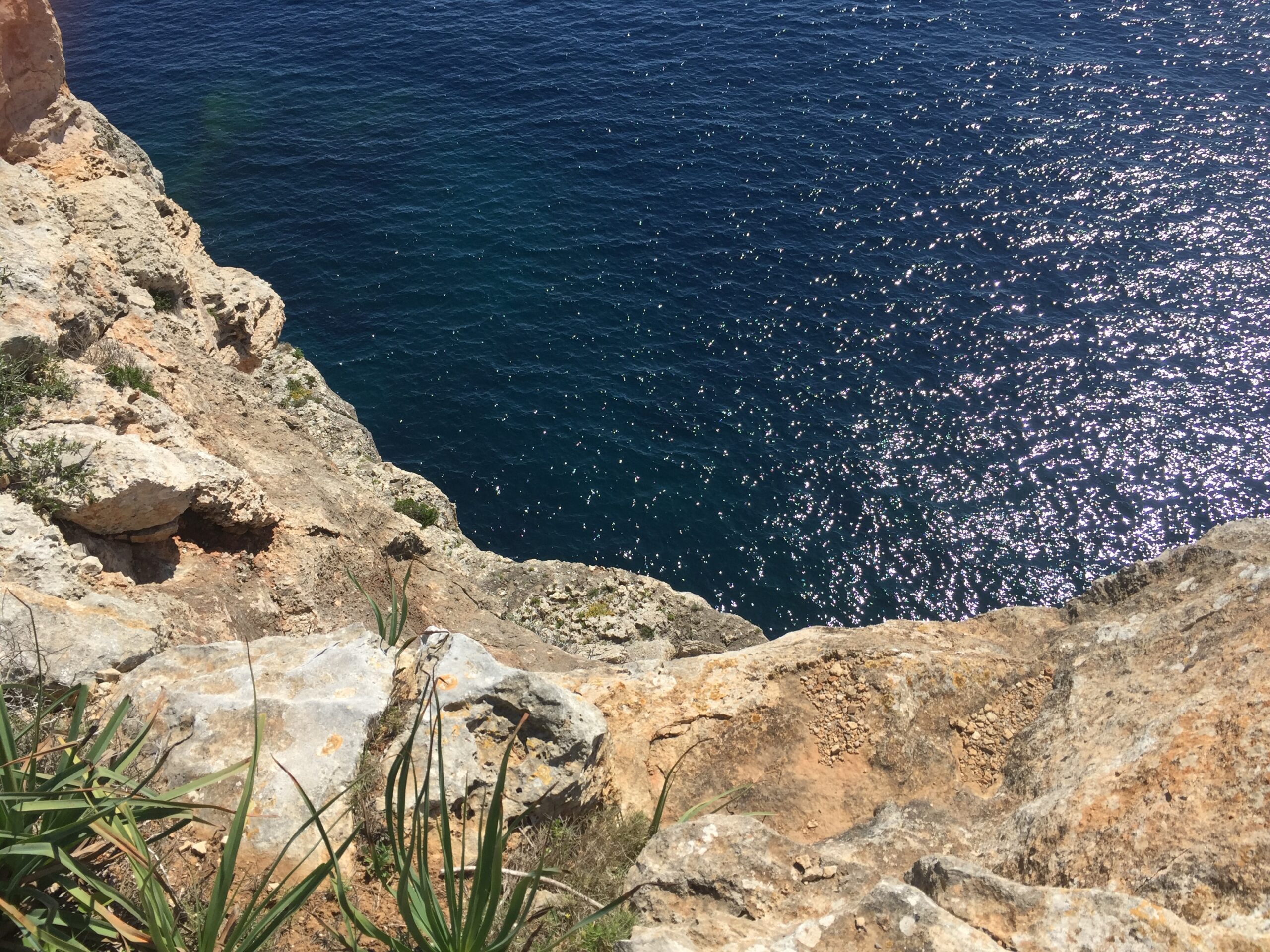In this article, you will discover the essential steps you should take to ensure the protection of your wellhead and maintain well cap security. You might be wondering – what measures can I implement to safeguard these vital components of my well? Look no further, as we will explore practical steps that can help you prevent contamination, maintain structural integrity, and ensure the longevity of your well system. So, let’s dive in and learn how to keep your wellhead and well cap safe and secure.

Wellhead Protection
Inspect and Maintain Wellhead Equipment Regularly
To ensure the integrity and functionality of your wellhead equipment, it is crucial to conduct regular inspections and maintenance. This includes checking for any signs of wear, corrosion, or damage to the wellhead components. Regularly inspecting the casing, valves, fittings, and other equipment will help identify any potential issues and allow for timely repairs or replacements. By dedicating time and resources to regular inspections and maintenance, you can prevent costly breakdowns, ensure optimal performance, and extend the lifespan of your wellhead equipment.
Keep the Surrounding Area Clean and Clear
Maintaining a clean and clutter-free area around your wellhead is essential for its protection. Remove any debris, vegetation, or objects near the wellhead that may pose a risk of damage or obstruct access. Keeping the surrounding area clear allows for easy visibility and quick identification of any potential leaks, spills, or unauthorized activities. Regularly inspect the perimeter of the wellhead and promptly address any issues that may compromise its safety or functionality.
Install a Fence or Barrier Around the Wellhead
Installing a fence or barrier around your wellhead adds an additional layer of protection and helps control access to the area. By marking the boundaries of the wellhead with a clearly visible fence, you can prevent accidental damage or unauthorized entry. Choose a fence or barrier that is durable, resilient to weather conditions, and provides adequate security. Regularly inspect and maintain the fence or barrier to ensure its effectiveness in safeguarding the wellhead.
Implement Effective Erosion Control Measures
Erosion can pose a significant risk to the stability and protection of your wellhead. Implementing effective erosion control measures is crucial in preventing soil loss, sedimentation, and potential contamination of the well. Assess the topography and drainage patterns surrounding the wellhead and identify areas prone to erosion. Implement erosion control techniques such as installing erosion control blankets, vegetation establishment, and strategically placed barriers. Regularly monitor and maintain these erosion control measures to ensure their continued effectiveness.
Monitor and Control Access to the Wellhead
Controlling access to your wellhead is vital for its protection and security. Implement measures such as locked gates, security cameras, or access control systems to regulate entry to the wellhead area. Monitoring access can help prevent unauthorized individuals from tampering with the equipment, causing spills, or engaging in other potentially harmful activities. Regularly review and update access control measures to ensure they align with your security protocols and any regulatory requirements.
Well Cap Security
Choose a Quality Well Cap
Selecting a high-quality well cap is essential for ensuring the security and integrity of your well. Well caps form a protective barrier between the wellhead and the external environment, preventing contamination and unauthorized access. When choosing a well cap, consider factors such as durability, resistance to tampering, and compatibility with your wellhead equipment. Consult with industry professionals or experts to identify the most suitable well cap for your specific needs.
Ensure Proper Installation of the Well Cap
Proper installation of the well cap is crucial to maximize its effectiveness and security. Follow the manufacturer’s instructions and guidelines to ensure correct installation. Pay attention to proper sealant application, bolt tightening, and alignment. If needed, seek professional assistance or guidance to ensure the well cap is securely and correctly fitted to your wellhead. Regularly inspect the installation to identify any signs of looseness, damage, or wear and address them promptly.
Regularly Inspect and Maintain the Well Cap
Routine inspections and maintenance of the well cap are essential for its ongoing security and protection. Inspect the well cap for any signs of degradation, cracks, or tampering regularly. A damaged or compromised well cap can lead to contamination or unauthorized entry, posing significant risks to the well. Clean the well cap and surrounding area to remove any debris or obstructions that may hinder its effectiveness. Proper maintenance ensures the longevity and reliability of the well cap’s security features.
Protect the Well Cap from Damage
Taking measures to protect the well cap from damage is crucial for its long-term security. Secure the area around the well cap to prevent accidental impacts, vandalism, or tampering. Keep heavy machinery, equipment, and vehicles away from the well cap to minimize the risk of physical damage. Regularly assess the condition of the surrounding area and make necessary adjustments or improvements to enhance well cap protection.
Implement Anti-Tampering Measures
Preventing tampering with the well cap is essential to maintain the security and integrity of your well. Consider implementing anti-tampering measures such as tamper-evident seals, locking mechanisms, or surveillance systems. These measures act as deterrents and provide visual indicators if unauthorized access is attempted. Regularly inspect the anti-tampering measures and replace or reinforce them as needed.
Training and Education
Provide Training on Wellhead Protection and Well Cap Security
Training your staff on wellhead protection and well cap security measures is crucial for maintaining a secure and well-maintained wellhead. Develop a comprehensive training program that covers topics such as proper inspection procedures, maintenance techniques, emergency response protocols, and well cap security measures. Ensure that all personnel involved in wellhead operations, maintenance, and security receive appropriate training. Regularly update the training program to incorporate any new regulations, technologies, or best practices.
Educate Staff and Community on Potential Risks
Raising awareness about the potential risks associated with wellhead protection and well cap security is essential for fostering a proactive approach to safety. Educate your staff on the importance of adhering to protocols and best practices to mitigate those risks. Additionally, engage with the local community to educate them about the potential impact of wellhead-related incidents. Inform residents about the importance of not tampering with the well cap and reporting any suspicious activity near the wellhead. By fostering a culture of awareness and responsibility, you can enhance the overall protection of your wellhead.
Create Emergency Response Plans
Preparing for wellhead emergencies is critical in minimizing potential damage and risks to public health and the environment. Develop comprehensive emergency response plans that outline specific protocols, responsibilities, and communication channels in the event of a wellhead-related incident. Collaborate with local authorities, emergency responders, and regulatory bodies to ensure alignment with their procedures and resources. Regularly review and update these plans to address any changes or lessons learned from previous incidents.
Conduct Drills and Exercises Regularly
Practicing emergency response procedures through drills and exercises is an effective way to enhance preparedness and identify areas for improvement. Conduct regular drills that simulate various wellhead emergency scenarios, allowing personnel to respond promptly and effectively. Evaluate the effectiveness of the drills, identify any gaps or challenges, and use these findings to refine your emergency response plans and procedures. Regular practice and training contribute to the overall preparedness and efficiency of your wellhead protection measures.
Regulatory Compliance
Stay Informed about Relevant Regulations and Guidelines
Adhering to relevant regulations and guidelines is crucial for ensuring wellhead protection and compliance with legal requirements. Stay informed about federal, state, and local regulations pertaining to wellhead protection, well cap security, and environmental safety. Regularly review applicable guidelines and stay updated on any changes or updates in regulations. Engage with regulatory authorities, industry associations, and other experts to clarify any uncertainties and ensure your practices align with the latest standards.
Obtain Necessary Permits and Licenses
Secure the necessary permits and licenses required for wellhead operations and maintenance. Different jurisdictions may have specific requirements regarding permits, certifications, or registrations for handling wellheads. Research and consult with local regulatory bodies to understand the specific requirements and ensure compliance. Keep a record of all permits and licenses, and periodically review them to ensure their validity and renewal.
Conduct Periodic Audits and Inspections
Periodic audits and inspections are important for assessing the effectiveness of your wellhead protection measures and detecting any areas of non-compliance. Conduct internal audits to evaluate the adherence to regulations, identify potential risks, and uncover areas for improvement. Additionally, collaborate with external auditors or regulatory authorities who can provide an unbiased assessment of your operations and compliance. Use the findings from audits and inspections to rectify any non-compliance issues promptly and enhance your wellhead protection efforts.
Address Non-Compliance Issues Promptly
Addressing non-compliance issues promptly is crucial to maintain the integrity and legality of your wellhead operations. If non-compliance issues are identified during audits or inspections, take immediate action to rectify them. Develop an action plan that outlines the steps to be taken, assigns responsibilities, and sets a timeline for resolving the issues. By addressing non-compliance issues promptly and transparently, you demonstrate your commitment to regulatory compliance and the protection of your wellhead.

Collaboration and Communication
Establish Collaboration with Local Authorities and Regulatory Bodies
Building strong partnerships and collaboration with local authorities and regulatory bodies is beneficial for wellhead protection. Engage in regular communication and exchange of information with these stakeholders to stay informed about any local concerns, changes in regulations, or emerging best practices. Seek their input and advice on improving wellhead protection measures and fostering a proactive approach to safety. By working together, you can ensure a coordinated and effective response to any wellhead-related issues.
Share Information with Neighboring Well Owners
Establishing communication channels and sharing information with neighboring well owners is important for collectively protecting the groundwater resources in the area. Collaborate with neighboring well owners to exchange insights, experiences, and lessons learned related to wellhead protection and security. Share information about potential risks, best practices, and new technologies that can enhance wellhead protection. By fostering a sense of collective responsibility, you can contribute to a safer and more secure groundwater environment for everyone.
Participate in Community Meetings and Initiatives
Active involvement in community meetings and initiatives promotes transparency and understanding among residents and stakeholders. Attend community meetings to present information about wellhead protection measures, answer questions, and address any concerns raised by residents. Engage in initiatives such as groundwater protection awareness campaigns, local environmental events, or educational programs to promote a shared understanding of the importance of wellhead protection. By actively participating in the community, you can build trust, raise awareness, and foster a sense of shared responsibility for wellhead security.
Communicate Wellhead Protection Measures to Residents
Clear and effective communication with residents is crucial for promoting wellhead protection and addressing any concerns they may have. Regularly inform residents about the measures in place to protect the wellhead and ensure the security of their water supply. Communicate any changes or improvements to wellhead protection measures and explain the reasons behind these actions. Encourage residents to report any suspicious activities or issues related to the wellhead promptly. By maintaining open lines of communication, you create a sense of transparency, trust, and community engagement.
Emergency Preparedness
Create Contingency Plans for Wellhead Emergencies
Developing comprehensive contingency plans for wellhead emergencies is crucial to minimize the impact of incidents. Identify potential risks and scenarios that may occur, such as equipment malfunctions, spills, or natural disasters. Outline clear procedures and protocols to be followed in each emergency scenario, including immediate response actions, notifications, and communication channels. Assign responsibilities and provide training to staff members involved in emergency response. Regularly review and update the contingency plans to align with changing conditions and lessons learned from previous emergencies.
Maintain Emergency Contact Information
Maintaining up-to-date emergency contact information is essential for prompt response and coordination during wellhead emergencies. Create a comprehensive list of emergency contacts, including local authorities, regulatory agencies, emergency responders, and key personnel within your organization. Ensure that this information is easily accessible to all staff members involved in wellhead operations, maintenance, and emergency response. Regularly review and update the contact list to reflect any changes in personnel or contact details.
Train Staff in Emergency Response Procedures
Providing adequate training to staff members involved in wellhead operations is crucial for an efficient and effective emergency response. Train your staff in emergency response procedures, including immediate actions to be taken, communication protocols, and evacuation procedures if necessary. Conduct drills and exercises that simulate emergency scenarios to practice and reinforce the training. By ensuring that staff members are well-prepared and trained, you can minimize response times and mitigate potential risks during wellhead emergencies.
Establish Communication Channels with Emergency Responders
Establishing effective communication channels with emergency responders is vital for a coordinated response during wellhead emergencies. Collaborate with local fire departments, emergency medical services, and other relevant agencies to establish direct lines of communication. Share information about the location of the wellhead, potential hazards, and any specific requirements they should be aware of during an emergency response. Maintain open lines of communication with emergency responders to foster a collaborative and timely response to any wellhead-related incidents.

Storage and Handling Practices
Store Chemicals and Hazardous Materials Properly
Safe storage and handling of chemicals and hazardous materials are essential to prevent spills and contamination. Store chemicals in designated and secure areas, following all relevant regulations and guidelines. Use appropriate containment systems, such as bunds or secondary containment, to prevent leaks or spills from reaching the wellhead. Regularly inspect storage areas for any signs of damage or deterioration and promptly address any issues. Proper storage practices minimize the risk of accidental spills and protect the integrity of the wellhead.
Avoid Contamination of Wellhead Area
Preventing contamination of the wellhead area is crucial for ensuring the safety and quality of the water supply. Take precautions to avoid activities or practices that may introduce contaminants to the wellhead area. For example, do not dispose of waste, chemicals, or fuels near the wellhead, and refrain from using fertilizers or pesticides in close proximity. Educate staff and contractors about the importance of maintaining a clean and contamination-free wellhead area and promote responsible and environmentally-friendly practices.
Implement Spill Prevention and Response Measures
Implementing spill prevention and response measures is essential to minimize the impact of accidental spills on the wellhead and surrounding environment. Develop spill prevention plans that outline best practices, procedures, and training for handling and storing hazardous materials. Ensure that proper spill response equipment, such as absorbents and containment booms, are readily available near the wellhead. Train staff members in spill response procedures and conduct regular drills to practice their skills. Promptly report and address any spills that occur near the wellhead to prevent contamination.
Dispose of Waste According to Regulations
Proper disposal of waste generated during wellhead operations is crucial for maintaining environmental safety and compliance. Familiarize yourself with the relevant regulations and guidelines for waste disposal in your jurisdiction. Implement a waste management program that ensures compliance with these regulations and promotes responsible and safe practices. Segregate and store different types of waste properly, using appropriate containers and labels. Regularly review and update your waste management procedures to align with any changes in regulations or environmental best practices.
Monitoring and Testing
Regularly Monitor Wellhead Conditions
Regular monitoring of wellhead conditions helps identify potential issues and allows for timely intervention. Establish a monitoring program that includes regular visual inspections of the wellhead area, casing, and equipment. Monitor for signs of leaks, corrosion, or other abnormalities that may indicate a problem. Maintain accurate records of inspection findings, and promptly address any identified issues. By staying vigilant and proactive in your monitoring efforts, you can detect and resolve problems before they escalate.
Conduct Water Sampling and Testing
Regular water sampling and testing are integral to ensuring the safety and quality of your water supply. Develop a water sampling plan that outlines the frequency, locations, and parameters to be tested. Conduct regular water sampling to assess factors such as pH, turbidity, bacteria levels, and chemical contamination. Engage with accredited laboratories to analyze the samples and interpret the results. Use the findings from water testing to identify any potential risks or contamination sources and take appropriate corrective measures.
Monitor Surrounding Groundwater Quality
Monitoring the quality of the surrounding groundwater is essential for understanding the potential risks and impacts on your wellhead. Collaborate with regulatory agencies or local authorities to obtain data on groundwater quality in your area. Establish a monitoring program that includes regular sampling and testing of the surrounding groundwater. Analyze the results to identify any trends, changes, or potential sources of contamination. By monitoring the groundwater quality, you can assess the effectiveness of your wellhead protection measures and identify any necessary improvements or adjustments.
Implement Early Warning Systems
Implementing early warning systems can provide an additional layer of protection for your wellhead. Install monitoring equipment such as pressure sensors, flow meters, or water level indicators to detect any abnormalities or deviations from normal operating conditions. Set up automated alerts or alarms to notify key personnel in case of any anomalies. Regularly calibrate and maintain the monitoring equipment to ensure accurate and reliable data. Early detection of potential issues allows for prompt response and minimizes the risk of more significant damage or contamination.
Infrastructure Upgrades
Consider Upgrading Aging Wellheads and Caps
Aging wellheads and caps may pose increased risks and vulnerabilities. Consider upgrading or replacing older wellheads and caps to ensure their continued effectiveness and security. Evaluate the condition and performance of your existing wellhead infrastructure and consult with professionals to determine the most suitable upgrades or replacements. Newer wellheads and caps often incorporate improved security features and technologies that enhance protection and reduce the risk of contamination or tampering.
Implement Modern Security Technologies
Advancements in technology have introduced various security measures that can enhance the protection of your wellhead. Consider implementing modern security technologies such as surveillance cameras, intrusion detection systems, or remote monitoring capabilities. These technologies provide additional layers of protection and enable real-time monitoring and response to any potential threats or unauthorized activities. Consult with security experts or professionals to identify the most appropriate technologies for your specific wellhead security needs.
Assess and Improve Physical Infrastructure
Regular assessment and improvement of the physical infrastructure surrounding your wellhead can contribute to enhanced protection and performance. Evaluate the integrity and stability of wellhead access roads, platforms, fencing, or drainage systems. Identify any areas of concern or potential risks, such as erosion, cracking, or deterioration. Implement necessary repairs, upgrades, or reinforcements to ensure the physical infrastructure supports the wellhead’s security and functionality effectively.
Adopt Smart Monitoring Systems
Harnessing the power of smart monitoring systems can revolutionize wellhead protection and security. Consider adopting advanced technologies such as Internet of Things (IoT) devices, real-time data analytics, or cloud-based monitoring platforms. These systems enable remote monitoring, predictive maintenance, and rapid response to any anomalies or alerts. Smart monitoring systems provide valuable insights into wellhead performance, security, and potential risks, allowing for proactive decision-making and continuous improvement.
Continual Improvement
Seek Professional Advice and Consultation
Continual improvement of wellhead protection and well cap security requires ongoing learning and adaptation. Seek professional advice and consultation from industry experts, specialists, or consultants. These professionals can provide valuable insights, guidance, and recommendations based on their expertise and industry best practices. Engage in dialogue with them to gain a deeper understanding of emerging technologies, regulatory changes, or innovative approaches to wellhead protection. Continually learning and seeking professional input contribute to the overall effectiveness and resilience of your wellhead protection measures.
Participate in Industry Workshops and Trainings
Active participation in industry workshops, trainings, and conferences can expand your knowledge base and keep you up to date with the latest advancements and best practices in wellhead protection and well cap security. Attend conferences, webinars, or seminars organized by industry associations, regulatory bodies, or environmental agencies. These events provide opportunities to network, learn from industry leaders, and gain insights into new technologies, regulations, or case studies. By actively engaging in professional development, you can enhance your skills and remain at the forefront of wellhead protection practices.
Stay Updated with Latest Technologies and Practices
Staying informed about the latest technologies and practices is essential for ensuring the continued effectiveness and relevance of your wellhead protection measures. Regularly review industry publications, technical journals, or online platforms to stay updated with advancements in wellhead security, equipment, and monitoring systems. Stay connected with industry associations, professional networks, or regulatory agencies that provide updates, guidelines, or resources regarding wellhead protection. Embrace a proactive approach to learning and adapt your practices accordingly to enhance the security and performance of your wellhead.
Periodically Review and Enhance Protection Measures
Regularly reviewing and enhancing your wellhead protection measures is essential for maintaining their effectiveness over time. Periodically evaluate the performance of your wellhead protection measures and compare them against industry standards, regulations, and best practices. Identify any areas for improvement or gaps in your existing measures. Develop action plans to address these gaps and enhance your protection measures accordingly. By continuously reviewing and enhancing your protection measures, you can adapt to changing conditions, mitigate potential risks, and maximize the security of your wellhead.
In conclusion, ensuring wellhead protection and well cap security requires a comprehensive and proactive approach. Through regular inspections, effective maintenance, proper installation, and continuous monitoring, you can safeguard the integrity of your wellhead equipment. By implementing security measures, collaborating with stakeholders, and educating staff and the community, you create a culture of safety and awareness. Regulatory compliance, emergency preparedness, and continual improvement contribute to the overall protection and security of your wellhead. By adopting best practices and staying informed about the latest technologies and advancements, you can ensure the long-term viability and safety of your wellhead operations.

